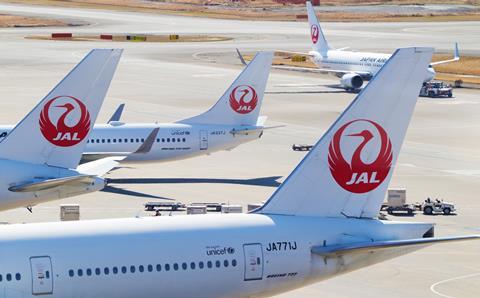Japan Airlines’ full-year earnings soared past pre-pandemic levels, as the airline benefited from a surge in inbound travel demand, along with strict cost controls.
For the year to 31 March, the airline group posted an operating profit of Y141 billion ($921 million), more than doubling year on year.

Consolidated revenue for the year stood at close to Y1.7 trillion, up about 20% year on year, and 19% higher than pre-pandemic levels.
The increase was led by a 49% jump in international passenger travel revenue, as well as a significant increase in revenues from its low-cost units, which include medium-haul carrier ZipAir.
JAL notes: “International passengers saw an increase, with the number of visitors to Japan exceeding pre-pandemic levels for the first time in October, allowing the company to capture strong inbound demand.”
Full-service operator JAL carried 6.6 million international passengers during the year, up 52% year on year. Traffic growth, at 36% year on year, outpaced an increase in capacity, which grew about 24% compared to the previous financial year.
Domestic passenger travel revenue also increased on a year-on-year basis, up 22% as the airline carried 17% more passengers across its domestic network.
The low-cost segment also performed well during the year: ZipAir saw revenue double year on year, while short-haul unit Spring Japan grew its passenger revenue by about 61%.
JAL group reported a 15% increase in costs to Y1.54 trillion, with non-fuel expenses growing by about 16% year on year.
“In addition to increased supply from the recovery of services, due to factors such as the depreciation of the yen, global inflation, and investments in human capital aimed at securing a stable workforce, costs rose by approximately 15%,” JAL notes.
In its forecast, JAL expects to remain profitable in the current financial year, which ends 31 March 2025. It forecasts a group EBIT of Y170 billion, with revenue targets set at Y1.93 trillion.
“Facing new challenges common to all of society, such as unstable global situations, global inflation, and a shortage of human resources, while considering changes in the management environment, efforts are directed towards achieving further growth through business model reforms,” it states.


























